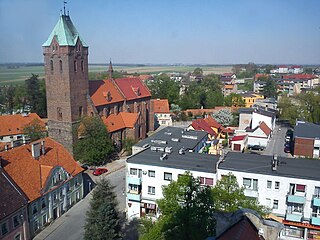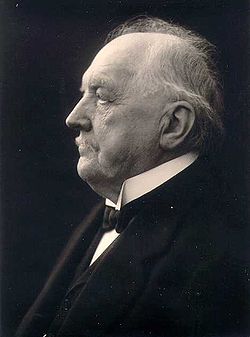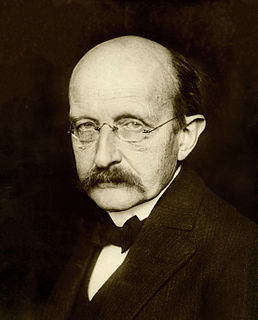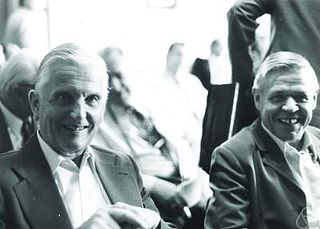| Martin Wilhelm Kutta | |
|---|---|
Martin Wilhelm Kutta (1867-1944) | |
| Born | 3 November 1867 Pitschen, Upper Silesia |
| Died | 25 December 1944 (aged 77) Fürstenfeldbruck |
| Residence | Germany |
| Nationality | German |
| Alma mater | University of Breslau University of Munich |
| Known for | Runge-Kutta method Zhukovsky-Kutta aerofoil Kutta–Joukowski theorem Kutta condition |
| Scientific career | |
| Fields | Mathematician |
| Institutions | University of Stuttgart RWTH Aachen Friedrich Schiller University Jena |
| Doctoral advisor | C. L. Ferdinand Lindemann Gustav A. Bauer |
| Other academic advisors | Walther Franz Anton von Dyck |
Martin Wilhelm Kutta (German: [ˈkʊta] ; 3 November 1867 – 25 December 1944) was a German mathematician.

Germany, officially the Federal Republic of Germany, is a country in Central and Western Europe, lying between the Baltic and North Seas to the north, and the Alps, Lake Constance and the High Rhine to the south. It borders Denmark to the north, Poland and the Czech Republic to the east, Austria and Switzerland to the south, France to the southwest, and Luxembourg, Belgium and the Netherlands to the west.

A mathematician is someone who uses an extensive knowledge of mathematics in his or her work, typically to solve mathematical problems.
Kutta was born in Pitschen, Upper Silesia (today Byczyna, Poland). He attended the University of Breslau from 1885 to 1890, and continued his studies in Munich until 1894, where he became the assistant of Walther Franz Anton von Dyck. From 1898, he spent half a year at the University of Cambridge. [1] From 1899 to 1909 he worked again as an assistant of von Dyck in Munich; from 1909 to 1910 he was adjunct professor at the Friedrich Schiller University Jena. He was professor at the RWTH Aachen from 1910 to 1912. Kutta became professor at the University of Stuttgart in 1912, where he stayed until his retirement in 1935.

Upper Silesia is the southeastern part of the historical and geographical region of Silesia, located mostly in Poland, with small parts in the Czech Republic.

Byczyna is a town in Kluczbork County, Opole Voivodeship, Poland, with 3,708 inhabitants (2004).

The University of Wrocław is a public research university located in Wrocław, Poland. The University of Wrocław was founded in 1945, replacing the previous German University of Breslau. Following the territorial changes of Poland's borders, academics primarily from the Jan Kazimierz University of Lwów restored the university building heavily damaged and split as a result of the Battle of Breslau (1945). Nowadays it is one of the most prominent educational institutions in the region.
In 1901, he co-developed the Runge-Kutta method, used to solve ordinary differential equations numerically. He is also remembered for the Zhukovsky-Kutta aerofoil, the Kutta-Zhukovsky theorem and the Kutta condition in aerodynamics. Kutta died in Fürstenfeldbruck, Germany in 1944.

A differential equation is a mathematical equation that relates some function with its derivatives. In applications, the functions usually represent physical quantities, the derivatives represent their rates of change, and the differential equation defines a relationship between the two. Because such relations are extremely common, differential equations play a prominent role in many disciplines including engineering, physics, economics, and biology.
The Kutta condition is a principle in steady-flow fluid dynamics, especially aerodynamics, that is applicable to solid bodies with sharp corners, such as the trailing edges of airfoils. It is named for German mathematician and aerodynamicist Martin Kutta.

Aerodynamics, from Greek ἀήρ aer (air) + δυναμική (dynamics), is the study of motion of air, particularly as interaction with a solid object, such as an airplane wing. It is a sub-field of fluid dynamics and gas dynamics, and many aspects of aerodynamics theory are common to these fields. The term aerodynamics is often used synonymously with gas dynamics, the difference being that "gas dynamics" applies to the study of the motion of all gases, and is not limited to air. The formal study of aerodynamics began in the modern sense in the eighteenth century, although observations of fundamental concepts such as aerodynamic drag were recorded much earlier. Most of the early efforts in aerodynamics were directed toward achieving heavier-than-air flight, which was first demonstrated by Otto Lilienthal in 1891. Since then, the use of aerodynamics through mathematical analysis, empirical approximations, wind tunnel experimentation, and computer simulations has formed a rational basis for the development of heavier-than-air flight and a number of other technologies. Recent work in aerodynamics has focused on issues related to compressible flow, turbulence, and boundary layers and has become increasingly computational in nature.














